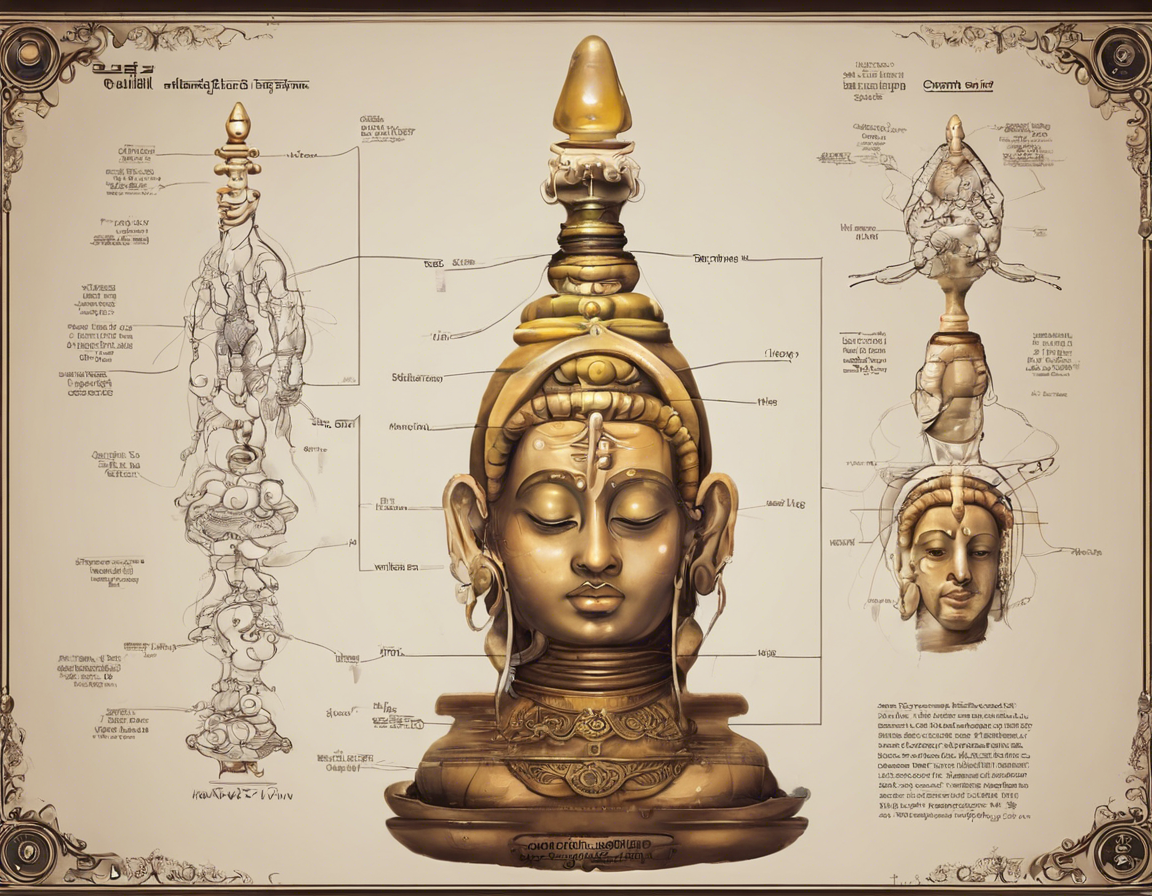Introduction:
The medulla oblongata, often referred to as the brain’s “primitive inner core,” plays a crucial role in controlling various autonomic functions essential for survival. Positioned at the lower part of the brainstem, the medulla oblongata serves as a bridge of communication between the spinal cord and the higher brain centers. This structure is known for its Shivling-like appearance, hence earning the nickname “Medulla Oblongata Shivling.”
Understanding the Medulla Oblongata:
The medulla oblongata is a cone-shaped structure located just above the spinal cord and below the pons. It is responsible for regulating vital autonomic functions such as breathing, heart rate, blood pressure, swallowing, and reflex actions. This segment of the brainstem also houses the cranial nerves responsible for sensory and motor functions of the head and neck.
Anatomical Features:
1. Pyramids: The medulla oblongata contains two longitudinal ridges known as the pyramids. These structures house the corticospinal tracts responsible for coordinating voluntary muscle movements.
2. Olive: Another prominent feature of the medulla is the olive, which is involved in motor learning and coordination.
3. Reticular Formation: This network of nuclei within the medulla plays a crucial role in arousal and consciousness.
4. Nuclei: Various nuclei within the medulla control functions such as respiration, cardiovascular regulation, swallowing, and vomiting.
Functions of the Medulla Oblongata:
1. Cardiovascular Regulation: The medulla oblongata helps regulate heart rate, blood pressure, and blood flow by adjusting the diameter of blood vessels.
2. Respiration: It controls respiratory rhythm and depth, ensuring the body receives an adequate supply of oxygen.
3. Swallowing and Vomiting: The medulla coordinates the complex movements involved in swallowing and triggers the reflex of vomiting when necessary.
4. Reflex Actions: It integrates various reflexes such as coughing, sneezing, and blinking to protect the body from potential harm.
5. Autonomic Functions: The medulla plays a vital role in maintaining homeostasis by controlling functions such as temperature regulation, digestion, and hormone secretion.
Clinical Relevance:
Damage to the medulla oblongata can have severe consequences on vital functions, leading to conditions such as medullary syndrome, characterized by difficulty swallowing, speech impairment, and changes in heart rate and blood pressure. Conditions like stroke, traumatic brain injury, and tumors can affect the medulla, emphasizing its critical role in maintaining homeostasis.
Conclusion:
The medulla oblongata serves as a vital center for controlling essential autonomic functions, earning its recognition as the brain’s “Shivling.” Understanding the anatomy and functions of this critical brain structure sheds light on its significance in regulating fundamental physiological processes necessary for human survival.
FAQs:
1. What is the medulla oblongata’s role in the body?
– The medulla oblongata controls vital autonomic functions such as breathing, heart rate, blood pressure, swallowing, and reflex actions.
2. How does damage to the medulla oblongata impact the body?
– Damage to the medulla can lead to conditions like medullary syndrome, affecting functions such as swallowing, heart rate, and speech.
3. What are the prominent anatomical features of the medulla oblongata?
– Key features include the pyramids, olive, reticular formation, and nuclei controlling various functions.
4. How does the medulla regulate cardiovascular function?
– The medulla regulates heart rate, blood pressure, and blood vessel diameter to maintain cardiovascular homeostasis.
5. What is the significance of the medulla oblongata in maintaining consciousness?
– The reticular formation within the medulla plays a crucial role in arousal and consciousness regulation.
